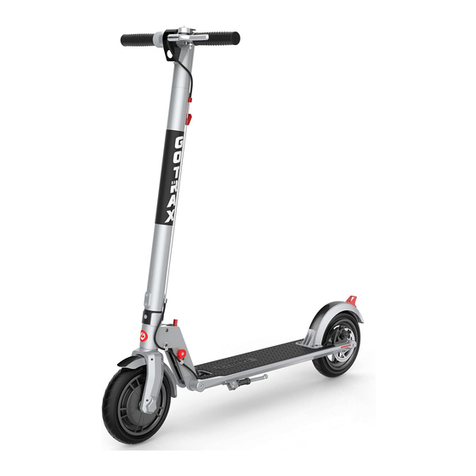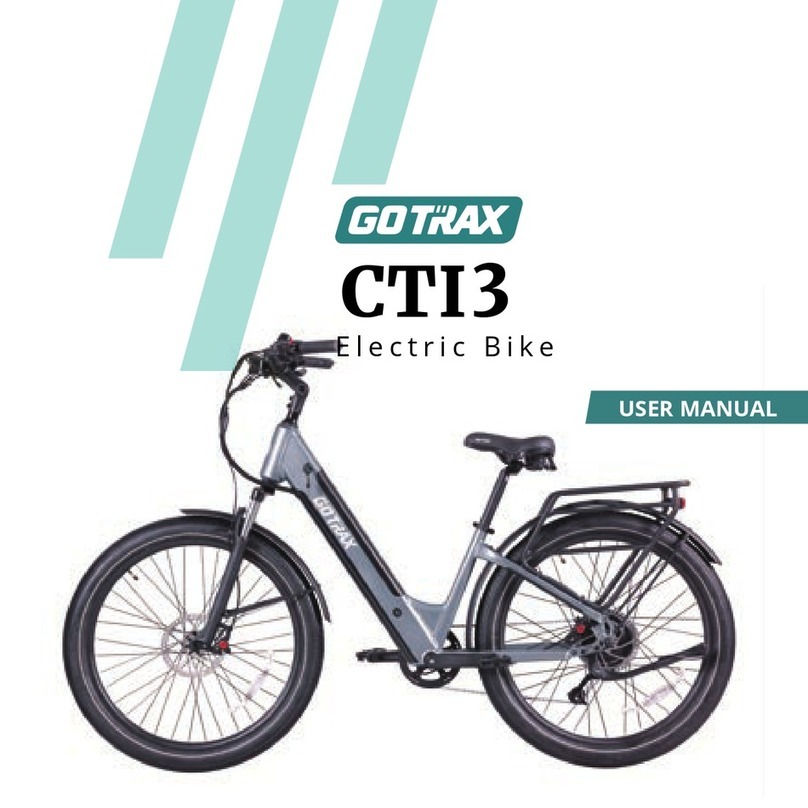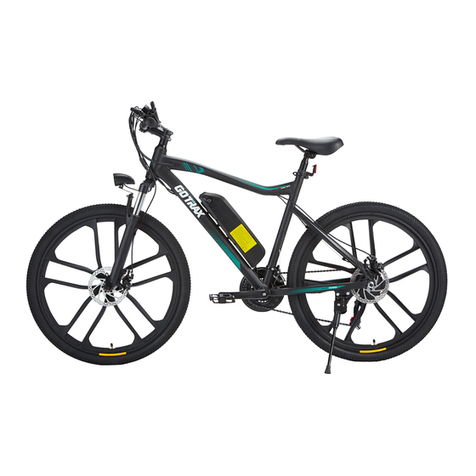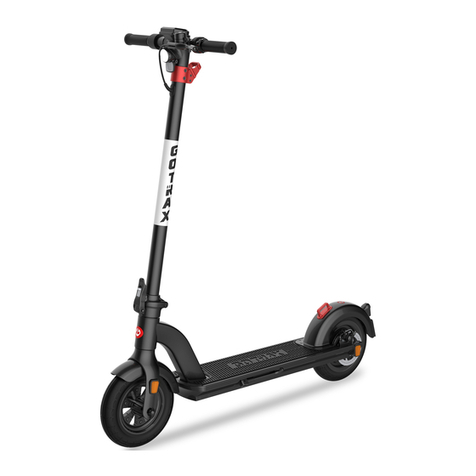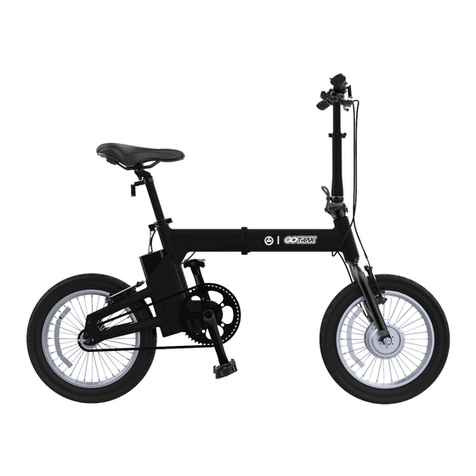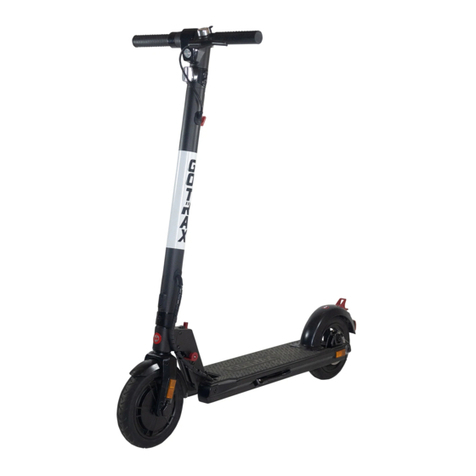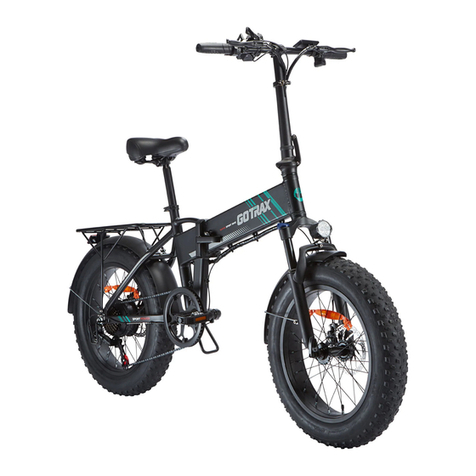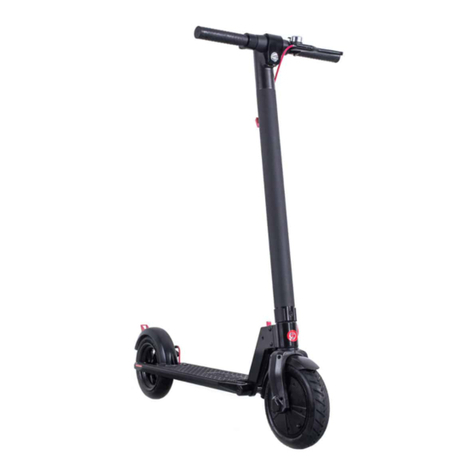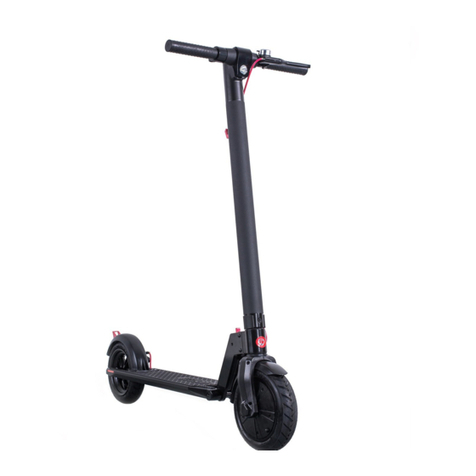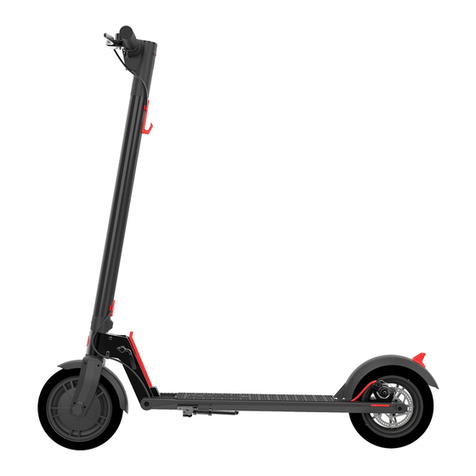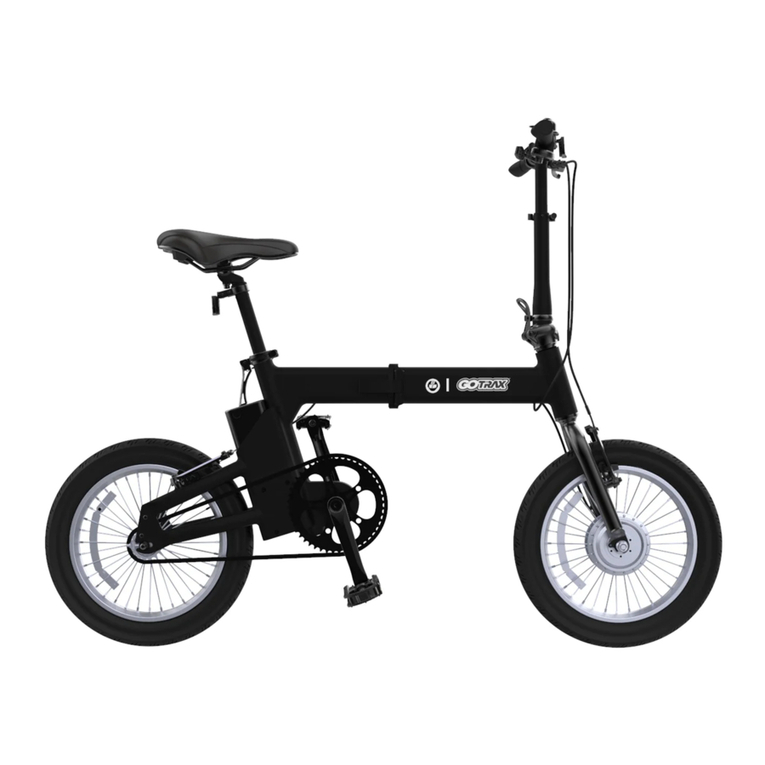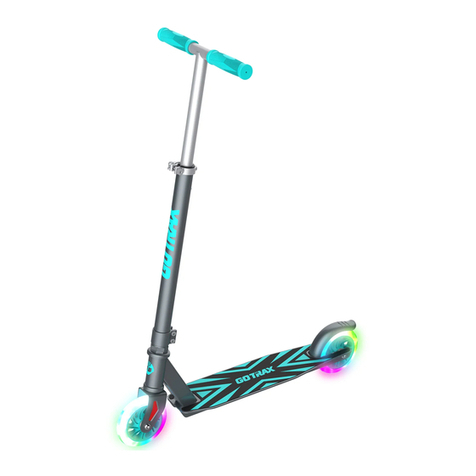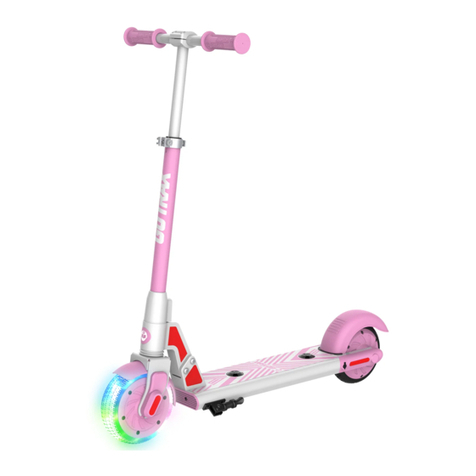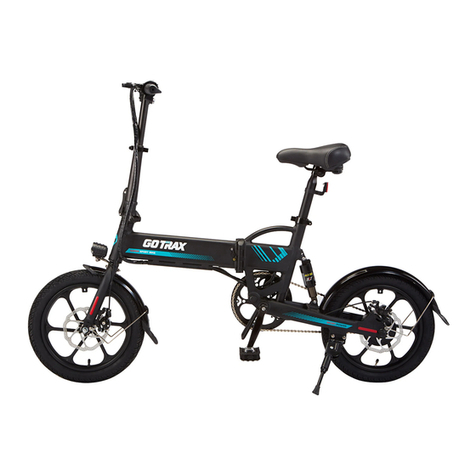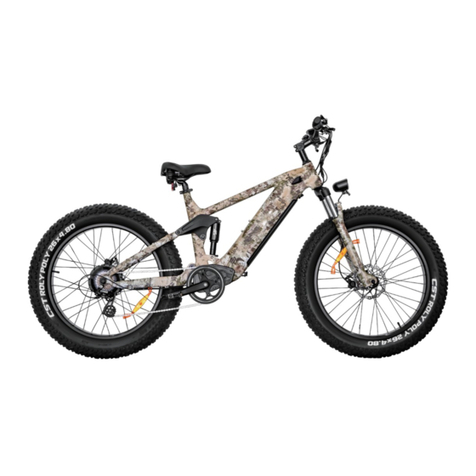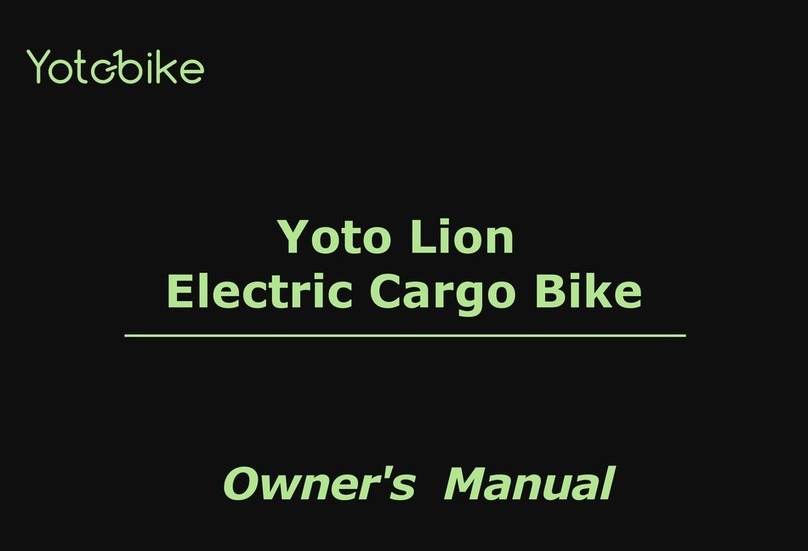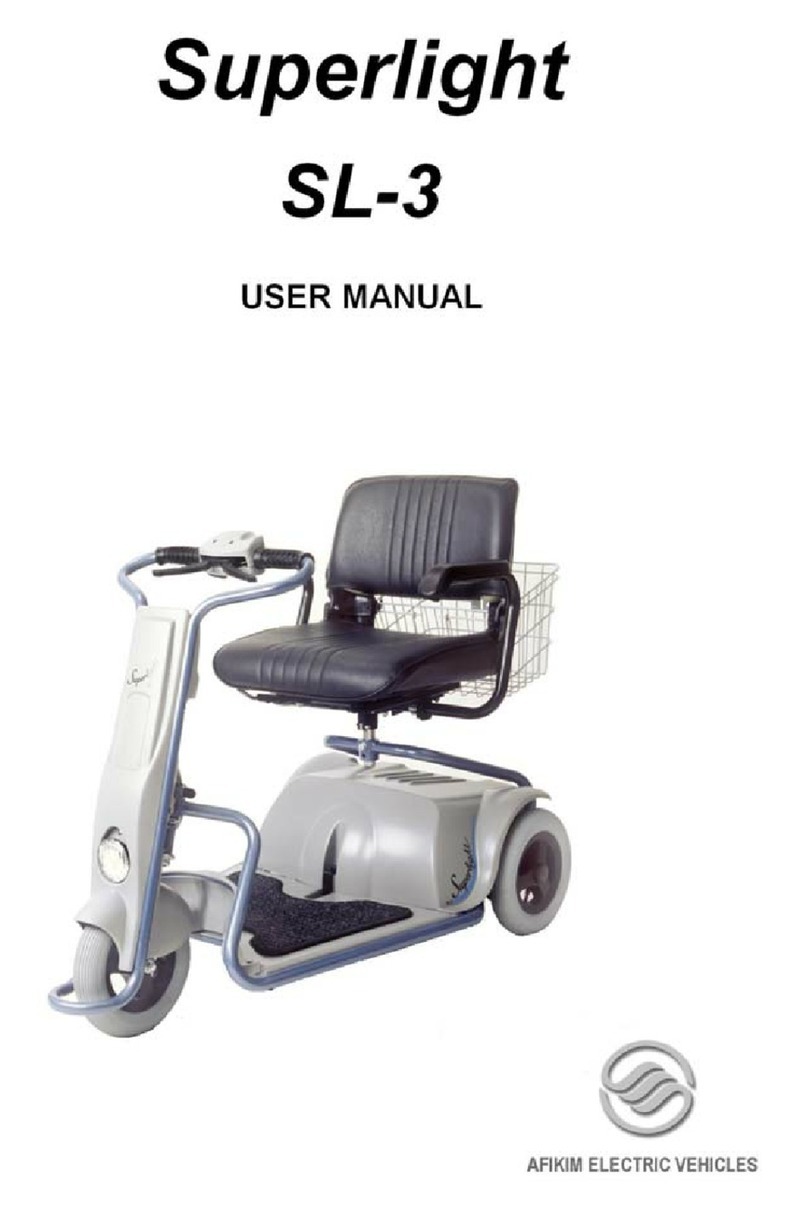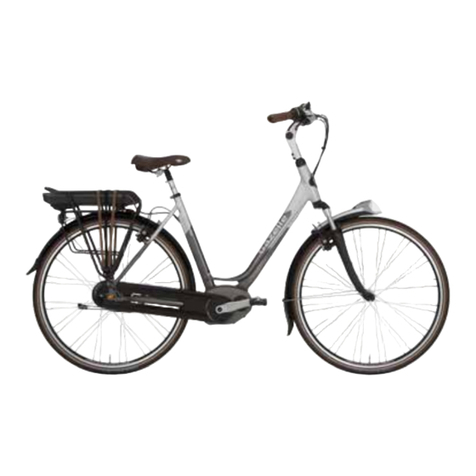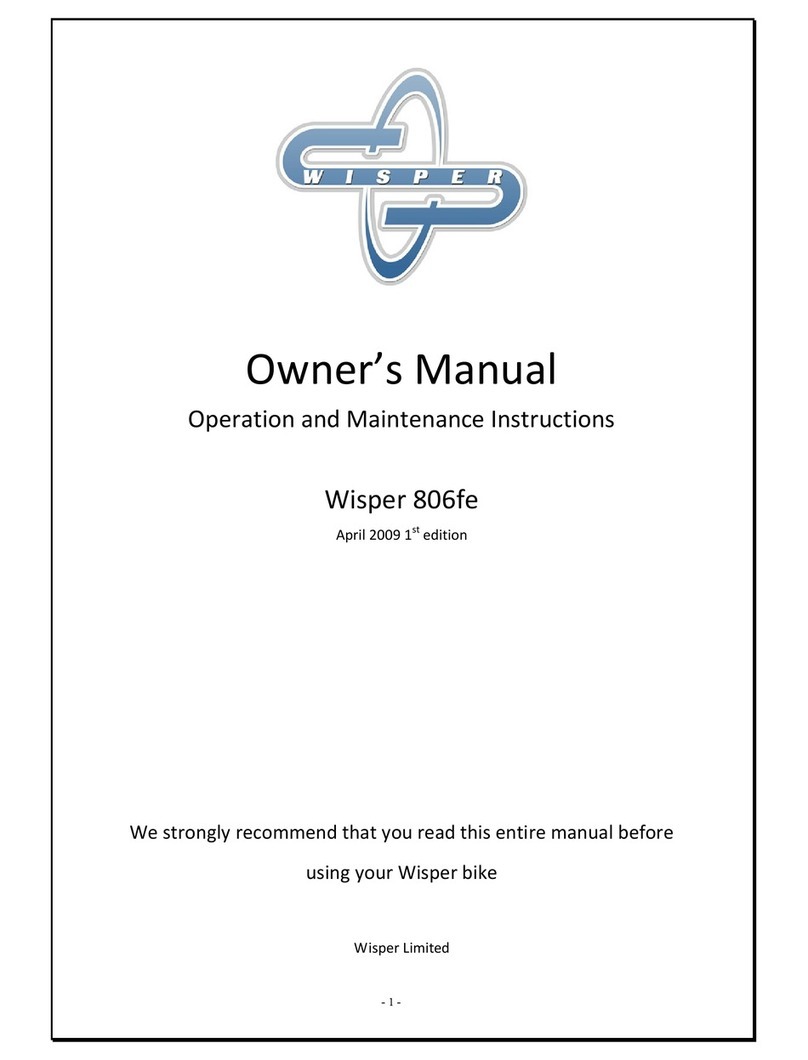CONTENTS
Safety Warnings 1
Before You Begin 2
Assembly and Set-Up/Charging Battery 3
Pre-Ride Checklist/Usage 4
SAFETY WARNINGS
WARNING: Riding an electric scooter does present potential risks and caution
is required. Like any riding product, an electric scooter has inherent hazards
associated with its use (for example, falling off or riding it into a hazardous
situation). Like any riding product, electric scooters can and are intended to
move and it is therefore, of course, possible to lose control or otherwise get into
dangerous situations. Both children and adults responsible for supervising them
must recognize that if such things occur, a rider can
be seriously injured or die, even when using safety equipment and other
precautions. RIDE AT YOUR OWN RISK AND USE COMMON SENSE.
WARNING: PARENTAL AND ADULT RESPONSIBILTY AND
SUPERVISION IS NECESSARY: Because products, like electric scooters,
can and do present potential hazards plainly associated with their use, it is
well recognized THE NEED FOR EXERCISE OF PARENTAL
RESPONSIBILITY IN SELECTING RIDING PRODUCTS APPROPRIATE
TO THE AGE OF A CHILD, OR PARENTAL SUPERVISION IN
SITUATIONS IN WHICH CHILDREN OF VARIOUS AGES MAY HAVE
ACCESS TO THE SAME RIDING PRODUCTS, IS IMPORTANT.
Not every product is appropriate for every age or size of child, and
different age recommendations are found within this category of product
which are intended to reflect the nature of the hazards and the expected
mental or physical ability, or both, of a child to cope with the hazards.
The recommended rider age is 8 and older. Any rider unable to fit
comfortably on the scooter should not attempt to ride it. A parent’s
decision to allow his or her child to ride this product should be based
on the child’s maturity, skill and ability to follow rules.
Keep this product away from small children and remember that it is
intended for use only by persons who are, at a minimum, completely
comfortable and competent while operating the scooter.
Persons with any mental or physical conditions that may make them
susceptible to injury, impair their physical dexterity or mental
capabilities to recognize, understand, and follow safety instructions
and to be able to understand the hazards inherent in scooter use,
should not use or be permitted to use products inappropriate for
their abilities. Persons with heart conditions, head, back or neck
ailments (or prior surgeries to these areas of the body), or pregnant
women, should be cautioned not to operate such products.
DO NOT EXCEED THE WEIGHT LIMIT OF 120 lbs (54 kg).
Rider weight does not necessarily mean a person’s size
is appropriate to fit or maintain control of the scooter.
CHECK AND MAINTAIN SCOOTER CONDITIONS
Before use, check to confirm that any and all chain guards or other covers
and guards are in place and in serviceable condition. Check that the brake
is functioning properly, and that tires are inflated properly and have
sufficient tread remaining. The scooter should be maintained and repaired
in accordance with the manufacturer’s specifications, using only the
manufacturer’s authorized replacement parts, and should not be modified
from the manufacturer’s original design and configuration.
